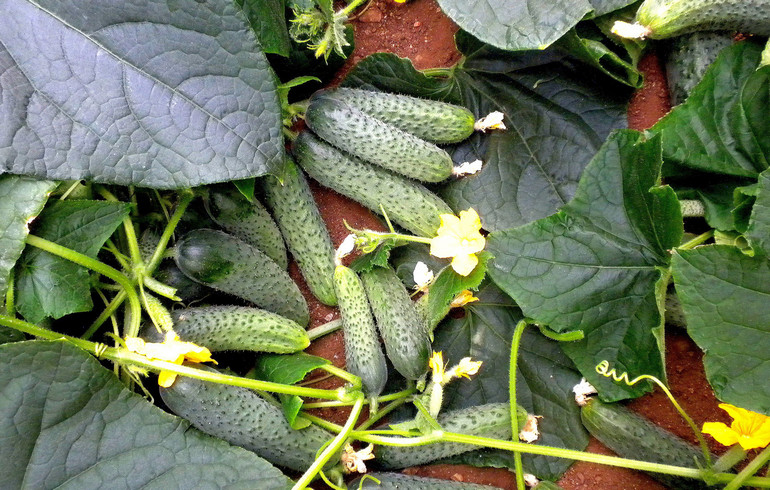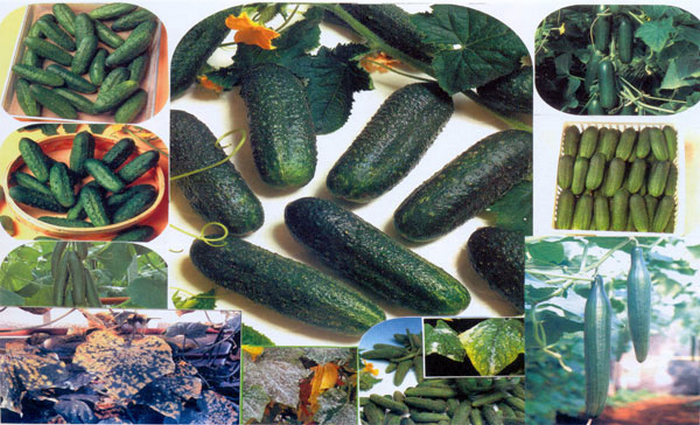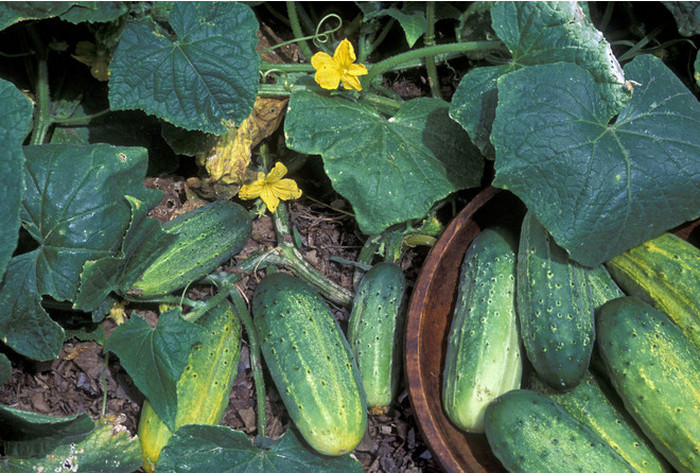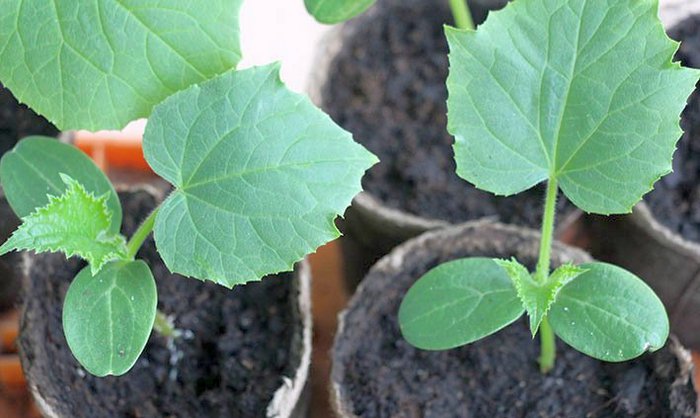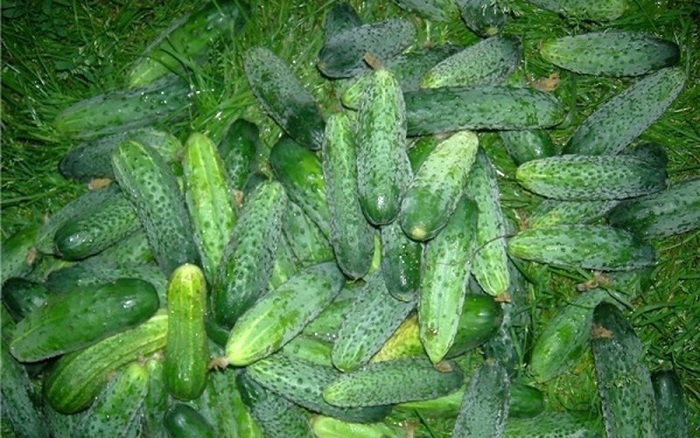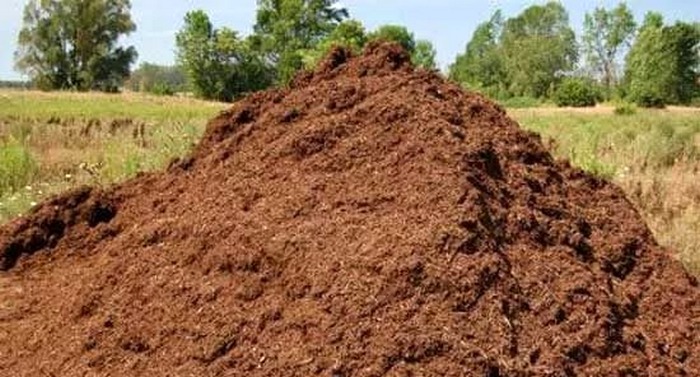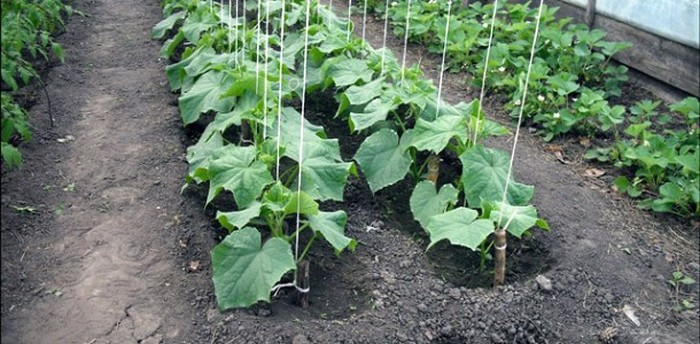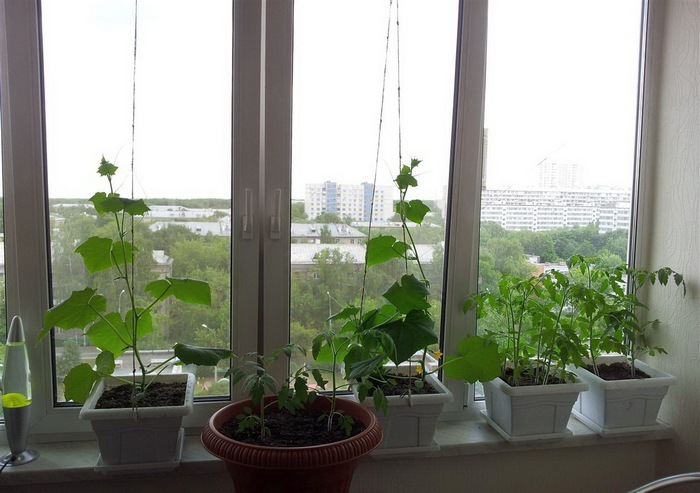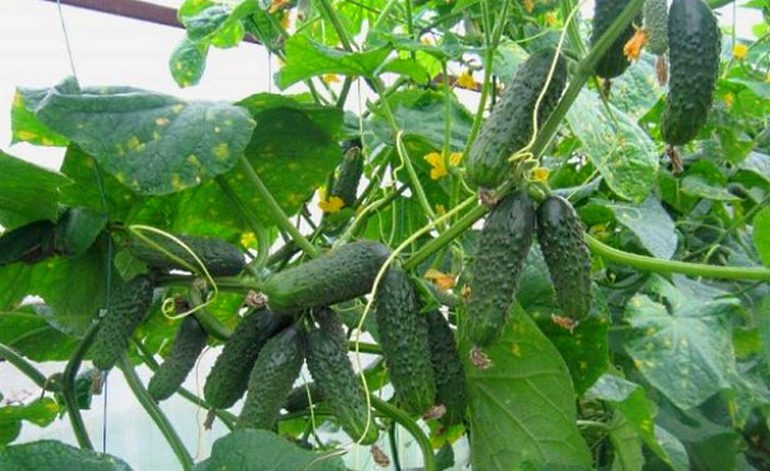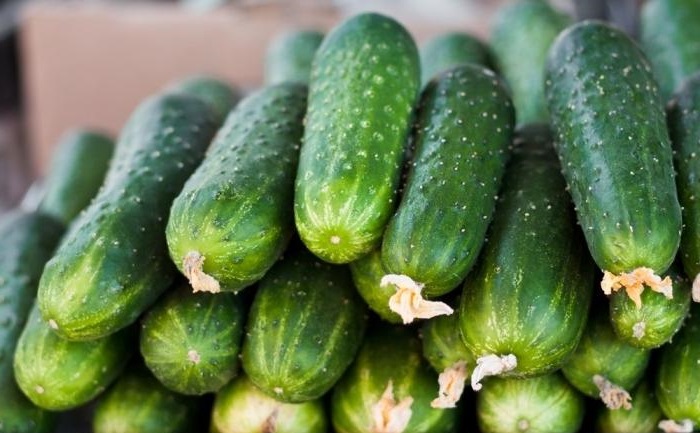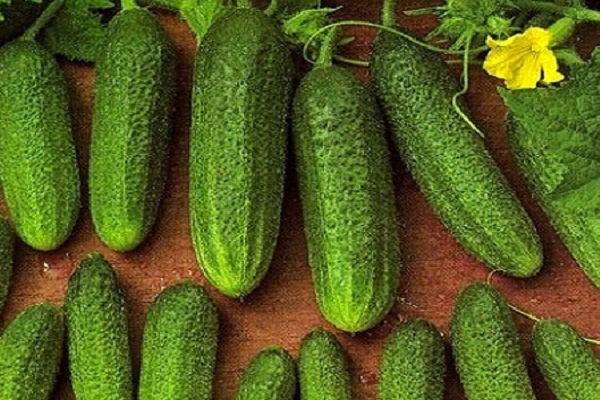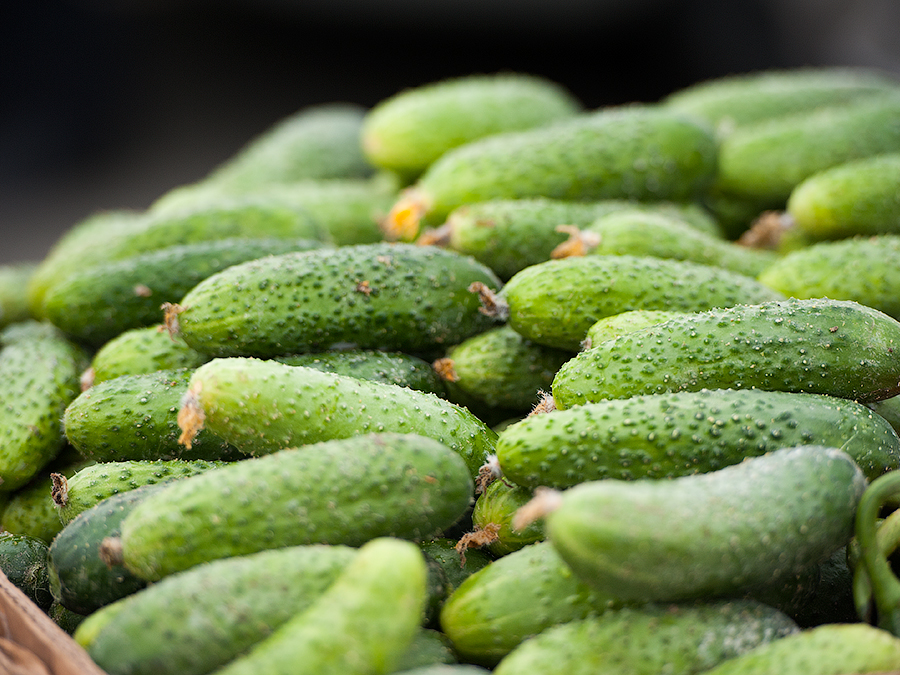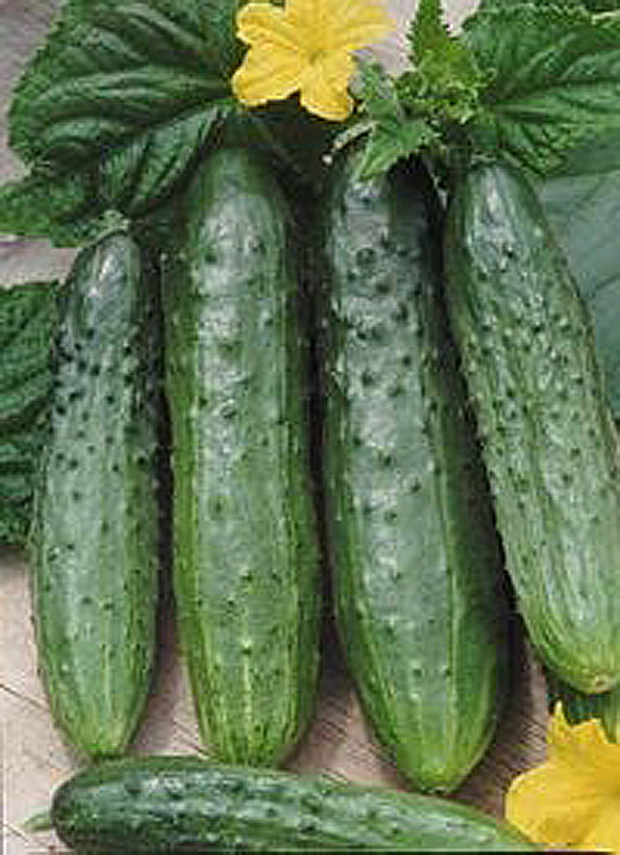Content:
Cucumbers are one of those vegetables that must be grown in the garden beds, even if there is not much space in the garden. Vegetable growers tend to choose those varieties that are highly resistant to diseases, high-yielding, and do not require special care. Therefore, recently f1 cucumbers have become so popular - hybrids that breeders get by crossing a pair of varieties with the best indicators of productivity and other qualities.
The resulting hybrids from their "parents" borrow all the best qualities, so gardeners have no problems with pests and pathogens, and the yield of hybrids is always high. Perhaps the main disadvantage of such vegetables is the impossibility to collect seed material for further planting - all the positive qualities are preserved only in the first generation cucumbers.
What does the f1 marking on cucumber seeds mean, is it worth growing such varieties, what are their advantages - it is worth understanding. Indeed, many people mistakenly believe that the designation "F1 cucumbers" means genetically modified products, so they prefer not to buy such seed material.
Description and characteristics of common varieties of F1 cucumbers
What does f1 mean on cucumber seeds? This designation says that this variety is a hybrid, such cucumbers are stronger and more productive than conventional varieties, so most summer residents buy seeds with such markings in specialized stores.
Breeders do not write on the packages the name of the varieties that were taken as source material, since they do not want the fruits of their selection to be produced by other seed-producing firms. What does "f1 cucumbers" mean in this case is clear: this is a hybrid variety of the first generation with all the positive qualities of the parent varieties and practically no drawbacks. Most of these vegetable plants have typical benefits:
- good germination (over 95%);
- ease of growing;
- good taste and excellent presentation;
- high yields;
- grow well on any soil;
- undemanding to care;
- resistance to most diseases and pests is above average.
The main characteristics of these hybrids should also be described. Most varieties are self-pollinated and therefore suitable for indoor and outdoor cultivation.
Such hybrids are more stress-resistant, tolerate negative weather changes more easily, give good yields even in those years when ordinary varieties of cucumbers do not yield yields.
These cucumbers are early ripening, most often it takes about 2 months from the moment of planting to harvest. The length of zelents does not exceed 13-15 cm, because the hybrids are gherkins. The mass of cucumbers can be no more than 115 g.
The most popular are hybrid varieties, a description of which will be given below:
- Masha - the variety is ultra-early, only female flowers appear on the lashes, therefore this hybrid does not require pollination. Productivity is above average. Resistance to powdery mildew and cucumber mosaic, the hybrid is tolerant to other diseases. Zelentsy - cylindrical gherkins, dark emerald in color. The pulp of ripe fruits is tender, without bitterness.
- Connie - an early ripe variety (ripening period - 1.5 months), the size of the gherkin fruits is about 8 cm, the mass of ripe greens is about 75 g, the shape is oval, the skin is covered with small tubercles, with white small thorns. The color of the skin is pale green, the pulp is light, tender, without bitterness.
- Courage - an early ripe hybrid, does not require pollination by bees, only female type flowers appear on the lashes, ovaries form on all, therefore the variety is high-yielding. High resistance to olive spot, all types of powdery mildew, to cucumber mosaic. Zelentsy have the shape of a cylinder, the skin color is dark emerald, its surface is covered with small tubercles and small whitish thorns. Ripe fruits have no bitterness, the aroma is typically cucumber.
The high-yielding Chinese Miracle cucumber variety is often grown in greenhouses, and many vegetable growers also consider it a hybrid. But this is not so - this is an ordinary varietal cucumber.
Planting, preparation of seeds and soil
Although most hybrid cucumbers are cold-tolerant, it is still better to plant their seeds in open ground in the second decade of May, when the frost on the soil has already passed. The place for the beds should be sunny, protected from strong winds.
From the whole variety of seed material of hybrid cucumbers, it is better to choose those in which the ovaries are formed in several pieces in internodes (f1 Geyser, f1 Zyatek, f1 Piccolo, f1 Mother-in-law, f1 Avalanche and similar).
Since seeds of hybrid varieties are only bought, this makes it easier for gardeners to pre-sowing work - manufacturing companies prepare seed material on their own. Immediately before planting seeds in the ground, you should only soak them in a solution of growth stimulants so that sprouts and roots appear faster.
Planting seeds outdoors should be done in mid-May; greenhouses can be used to plant seed from early May. After planting seed in the beds, you need to mark the rows of cucumbers with sand (until shoots appear).
In autumn, you need to prepare beds for such cucumbers - add organic matter (mullein, chicken droppings, compost or humus) to them for digging, embedding fertilizers 10-15 cm into the ground. Over the winter, such feeding will begin to decompose, and in the spring it will supply the vegetable crop with nutrients.
In the spring, a complex mineral fertilizer should be added to the soil.
Heavy soils, in which moisture too often stagnates, are poorly suited for growing cucumbers. But if there are no other areas, alumina can be improved by introducing a large amount of river sand into the beds (1: 1 with soil).
Formation of bushes, cultivation features
The formation of bushes of hybrid cucumbers is a necessary procedure, because the main crop on them grows on the main stem, and begins to ripen on the side shoots after the main crop is harvested. Therefore, the main shoot is usually pinched at a height of 1.5 m, while the lateral stems should also be limited in growth.
The main stem is wrapped around the trellis. From the last two knots of the main lash, side lashes are released, which must be pinched through 5 leaves.
In the open field
In the open field, caring for cucumber hybrids is quite simple: you need to constantly remove all weeds, loosen the soil every 5-7 days, carry out regular watering before fruiting - once a week, during the ripening of the crop - every three to four days.
Also, during the season, these vegetable plants need to be fed several times - a couple of weeks after germination, during the flowering period and during the intensive ripening of the crop.
In greenhouses
In greenhouses, it is necessary to maintain a sufficiently low level of humidity so that the cucumbers do not get sick with various fungal diseases. Watering cucumbers indoors should be done in the morning so that the moisture evaporates during the day. In warm weather, windows and doors in greenhouses are opened to ventilate the premises.
In greenhouses, as well as in the open field, you need to tie up whips, and also harvest once every few days.
Houses on the balcony and windowsill
At home, you can grow certain hybrids of city cucumbers. Caring for them is about the same as for plants in greenhouses. The Urban cucumber is self-pollinated, its yield is high enough, it can be increased by more often applying fertilizers.
Heat resistance and cold resistance of the species
Cucumber hybrids have many positive qualities, including resistance to heat and minor cold snaps. But in spring, when growing plants in open ground, it is better to cover young plants with a film for the night, since they are not yet strong enough and may freeze.
In extreme heat, adult plants may wilt slightly, in which case they can be watered once again under the bases of the whips, trying to prevent water drops from falling on the foliage.
Disease resistance of the species
This type of vegetable plant is highly resistant to most diseases affecting pumpkin plants. However, it is necessary to follow the rules for caring for such cucumbers so as not to provoke the appearance of pathogenic microorganisms and pests.
The fight against diseases and pests affecting hybrids should be the same as for other varieties of these vegetables.
